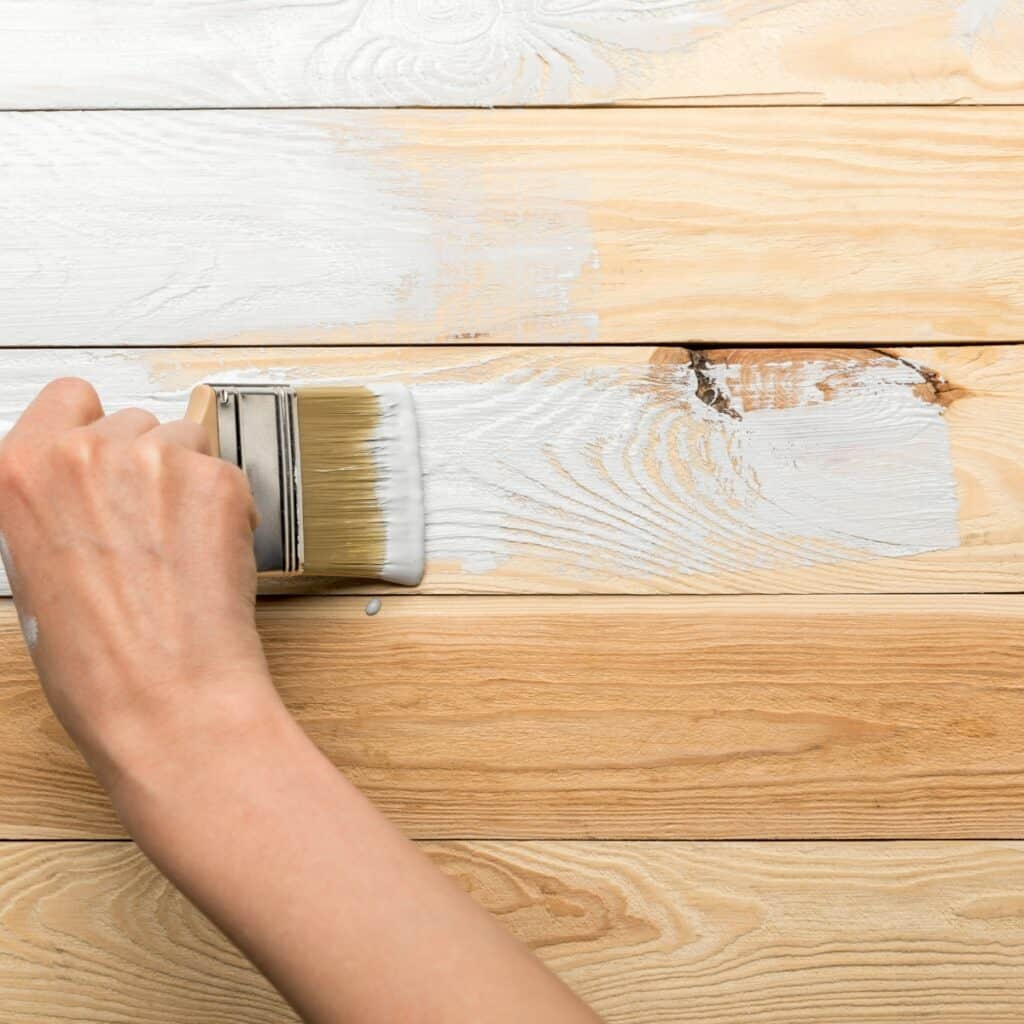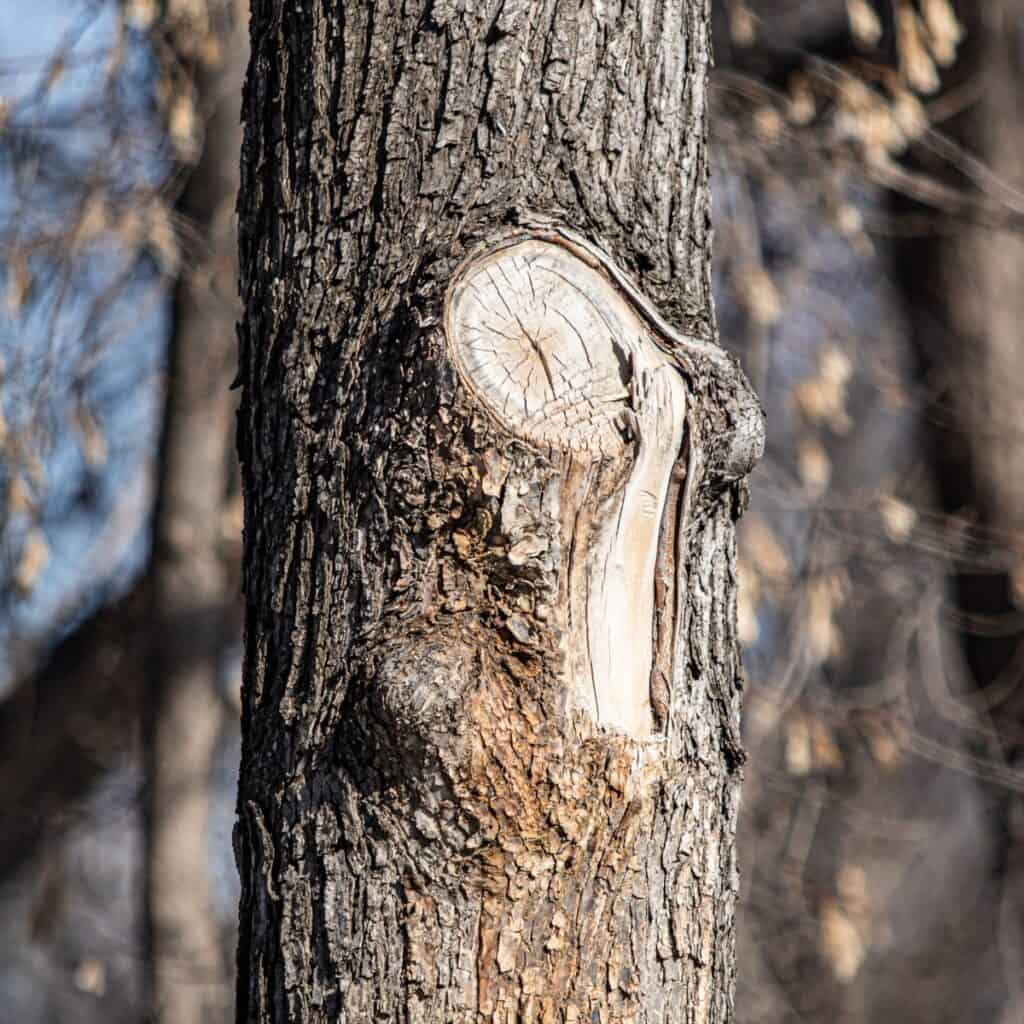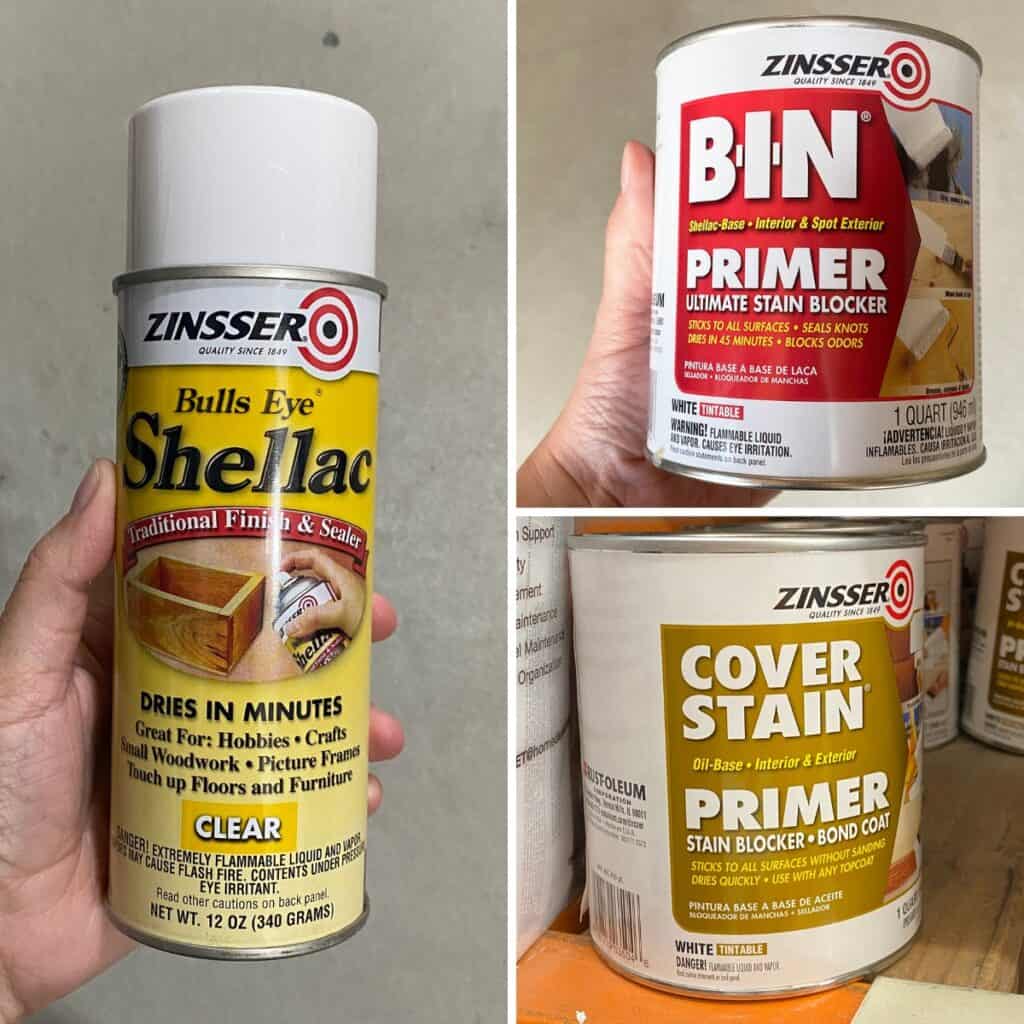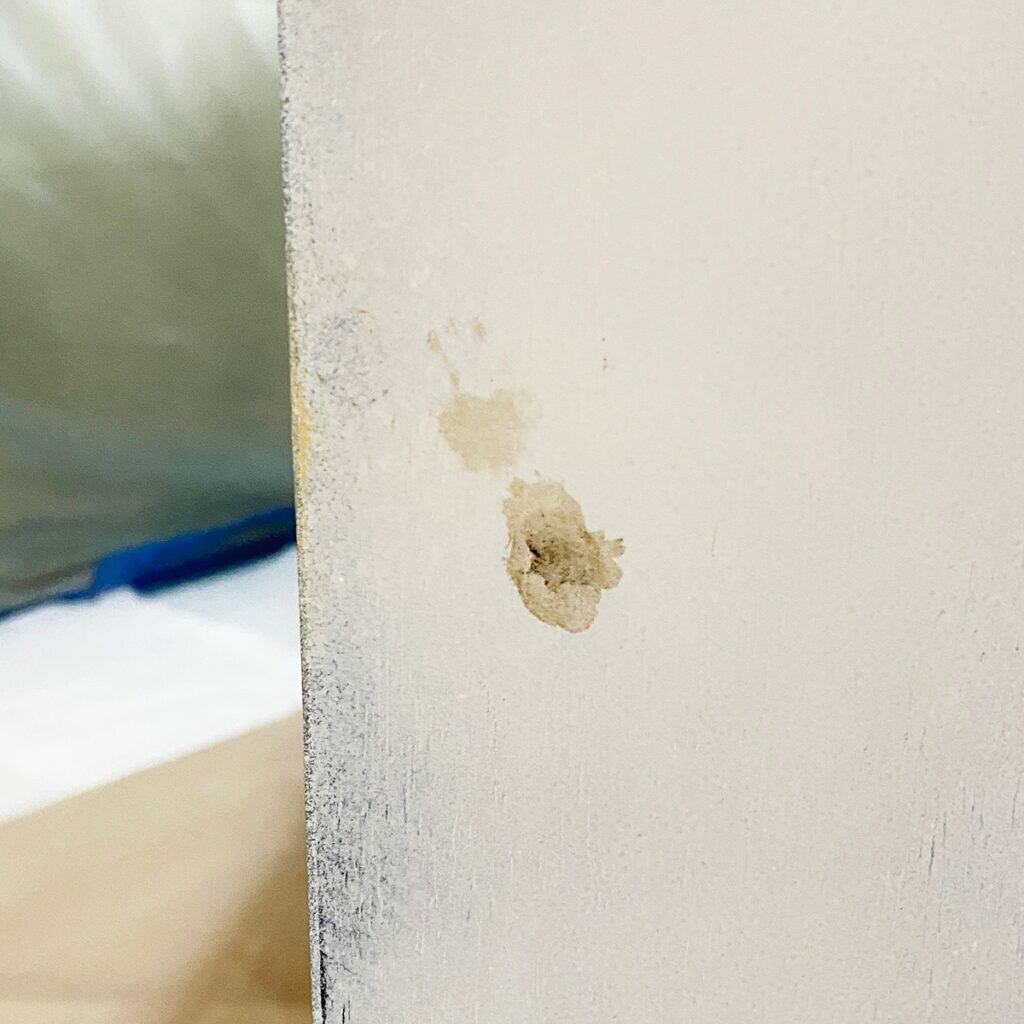How to Stop Wood Knots from Bleeding Through Paint
If you’re painting a piece of wood, whether it’s for a new project or to refinish an old one, you may have encountered the problem of wood knots bleeding through the paint. So today, we’re sharing some tips on how to stop wood knots from bleeding through paint.
This is especially important to know when painting furniture, as it can really be a bummer to put all your effort into a project and end up with unsightly wood knots ruining the finished look.

Knots bleeding through paint can be both frustrating and time-consuming, as you have to repaint the entire surface again just because of a few pesky knots.
Not to mention, it can also ruin the aesthetic of your painted furniture. Whether you’re going for a clean, modern look or a rustic, farmhouse feel, wood knots can throw off the entire design.
We definitely don’t want that to happen! With a little know-how, you can prevent this from happening and get your project done faster.
Let’s see how to deal with wood knots on painted furniture!
Supplies Used to Stop Wood Knots from Bleeding Through Paint
As an Amazon Associate, I earn from qualifying purchases. I also may earn from other qualifying purchases with other companies or get free product to review and use. All opinions are my own.
- 220 Grit Sandpaper
- BIN Shellac Based Primer, Kilz Oil Based Primer or Cover Stain Primer
- Paint
- Brush or Roller
What are wood knots?
Wood knots are protrusions on the surface of the wood that occurs when a branch or limb grows out from the trunk of a tree.
The branch may eventually fall off, or they’re cut off, but the scars left behind remain.

Knots can be considered imperfections in the wood, and as such, they are often hidden during the manufacturing process.
Why do they bleed through paint?
Wood knots contain sap and tannins that can seep through paint and cause discoloration. If they are not properly sealed, they can bleed through paint, causing unsightly discoloration.
For these reasons, it is important to properly seal knots before painting or staining any wooden surface.
How to Identify Wood Knots Before Painting
Wood knots are identified by their rounded shape and the fact that they feel raised when running your hand along the surface of the wood.

They can be any size, though they are typically small. If there are any holes in the knots, you can fill them in with wood filler before painting.
To paint over a wood knot, you will first need to use sandpaper to rough up the surface of the knot. This will help the paint to adhere better.
How to stop wood knots from bleeding through paint
One of the most common problems when painting over wood is that the knots in the wood can bleed through the paint, ruining the finish.

There is really only one way to stop this from happening. Seal the knots before painting.
Use Wood Knot Sealants
Use at least 2 coats of BIN shellac based primer or oil based primer like Kilz or Cover Stain to prevent the bleedthrough. Check out my Zinsser Cover Stain Primer review here to learn more.
You can also use both primers, letting the first dry completely before painting a coat of the other one, for maximum blocking power.
These primers will create a barrier between the wood and the paint, preventing the knots from bleeding through.
If you need a clear primer, clear shellac is also a great sealant and is excellent under wood stain. Prime all of the wood, at least once, for the best looking finish overall.

Oil-based primers may need special care with what paint you paint over them. Or wait 48 hours for it to dry before using a water-based paint on top of it. Read the instructions on the back of the can for specific information.
BIN shellac based primer can be top coated with any type of paint. If you’re unsure what type of paint you have, test a small area first to see if the primer adheres properly.
Both oil-based primer and shellac based primers have a strong smell, and both need special cleaners to clean them up. Check out the best primers to stop tannin bleed here.
The Best Paints for Knotty Wood
First, choose a dark-colored paint. The darker color will help to hide any bleedthrough.

Second, use an oil-based paint. The oil will help to block the bleed through from the knots.
If you’re set on using a water-based paint, be extra diligent at applying multiple coats of a stain-blocking primer before using the water-based paint. Here’s our list of the best paint for furniture.
Multiple coats of stain-blocking primers that I mentioned above will block all of the bleed through.
More Painting Furniture Resources
- Best Primers for Painting Furniture
- Best Paints for Wood Furniture
- Best Wood Stain Removers
- How to Paint Stripes on a Wall Without Bleeding
- Best Way to Paint Furniture
Follow us on YouTube to get more tips for painting furniture.
Or share your project with us on our Facebook Group and be part of our community. See you there!







